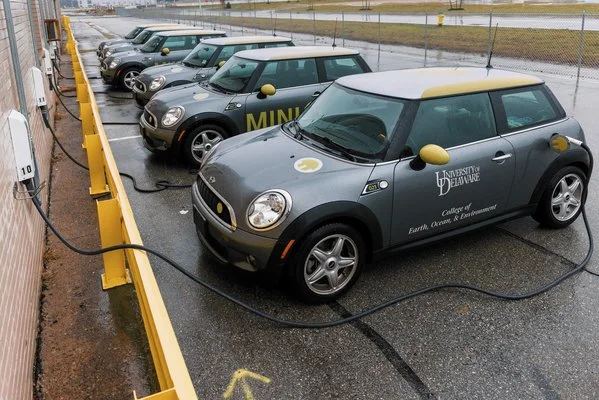>It’s been seven years in the making, but the world’s first “invisible” bike helmet is now available for purchase. The brainchild of Anna Haupt and Terese Alstin, two industrial designers fromSweden, the Hövding—Swedish for “chieftain”—is essentially a collar that deploys an airbag-like hood in case of an impact. Unlike regular hard-hat helmets, which the duo deride as “bulky, like a hard mushroom on your head,” the Hövding is designed to be unobtrusive. But the device is more than an expression of vanity. “An invisible bicycle helmet is a symbol of the ‘impossible,’” Haupt and Alstin say in the video. “If people say it’s impossible, we have to prove them wrong.”
>Composting park proposal keeps NYC's organic waste close to home. As New York City attempts to up its food scrap waste diversion game and align itself with West Coast composting powerhouses like San Francisco and Portland (baby steps folks, baby steps), one architecture firm has proposed a rather intriguing idea on how to accommodate roughly 30 percent of the city’s residential waste stream that’s composed purely of organic waste.
Renderings: PRESENT Architecture via Gizmodo
Currently, a majority of the city’s waste — all 14 million tons of it produced annually — is hauled off via truck to out-of state landfills (thanks Ohio, Virginia, and Pennsylvania!) to the tune of $300 million. This is obviously an insane amount of money to dedicate to the unloading of garbage on other states. With PRESENT Architecture’s Green Loop proposal, New York City's organic waste, which, if all goes as planned will be collected via a mandatory residential curbside collection program by 2016, wouldn’t make that greenhouse gas-intensive journey to some far-flung dump. It would stay close to home.Really close to home.
>What do you think about this? San Francisco experiments with planter-based public pee stations. Designed in response to a rampant public urination problem, PPlanter is a smart and ecologically sensitive public urinal that conserves water while prettying up things with bamboo.
Open-minded but not always easy-going, San Francisco is the kind of place where it’s easy to do certain things that may prove to be more formidable — or even impossible — tasks in other major cities. Things like recycling your yoga tank, munching on hyper-local produce at a baseball game,composting the remnants of last night’s dinner party, and, until recently, going on a casual stroll around your neighborhood without pants.
One thing, however, that San Francisco has never quite been able to nail down is an ecologically responsible, aesthetically inoffensive method in which full-bladdered residents and visitors alike can urinate while on-the-go. Important stuff! Continue Reading.
>Leapfrog Project: Living Tents Could Bring Light and Hope to Typhoon-Ravaged Philipines Town. Rebuilding after natural disasters is a daunting task that requires the synergy of different disciplines. Post-disaster rehabilitation efforts in places like Haiti have proved that in order to avoid failure, various sectors must come together on the ground to strategize the rebuilding program. Leapfrog aims to engage different schools of thought in design, science, business, and technology to create a discourse and group activities that will generate ideas for the recovery of the destroyed city of Tacloban, located about 360 miles southeast of Manila.
These unique installations are inspired by the Marimo ball, a rare growth form of alage that takes the shape of a large green ball. The project is an extension of the Living Wall project developed by Atelier Lira Luis, and it draws upon biomimicry and living skin concepts to encourage resiliency in rebuilding.













